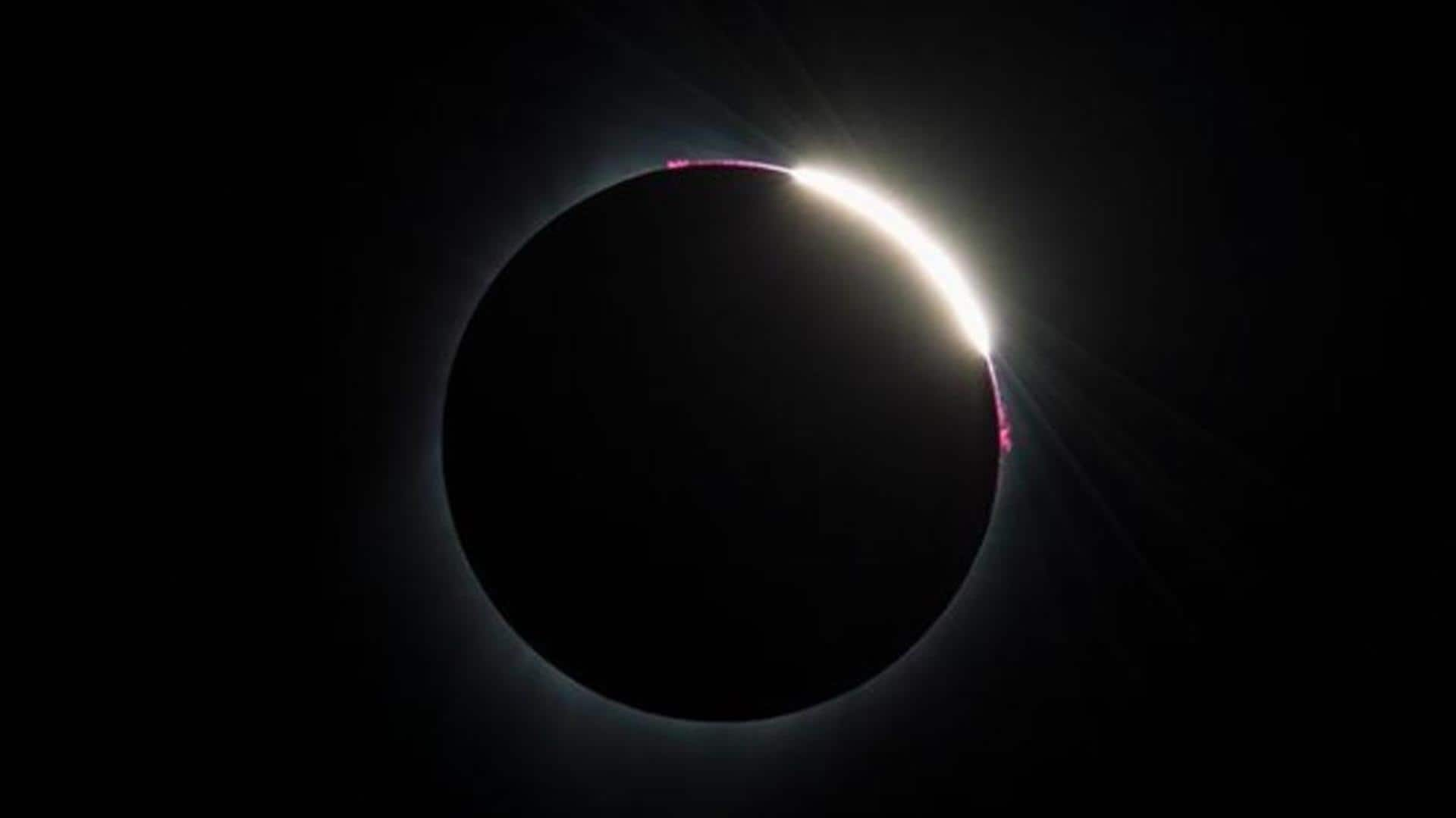
Hybrid solar eclipse on April 20: How to watch
What's the story
On April 20, we will see a rare hybrid solar eclipse. It will be the first solar eclipse of this year. Only seven hybrid solar eclipses are said to take place in the 21st century. One of them will be the upcoming event, which makes it all the more special. Depending on your location, you can see either a total or annular solar eclipse.
Types
What are the types of solar eclipses?
The different types of solar eclipses include total, partial, annular, and hybrid, per NASA. In a total solar eclipse, the Moon completely blocks the Sun. Locations that lie in the eclipse's path will be able to see the Sun's outer atmosphere, the corona. In an annular eclipse, the Moon is farther away from Earth and does not fully cover the Sun.
Partial
What happens in a hybrid solar eclipse?
In a partial solar eclipse, the Sun, Moon, and Earth are not in perfect alignment and only a part of the Sun will be covered, making it appear like a crescent. A hybrid solar eclipse shifts from annular and total, due to the Earth's curvature. Hybrid solar eclipses, or annular-total eclipses, are rare and constitute just 4.8% of all types of solar eclipses.
Visibility
Which regions can see the April 20 hybrid solar eclipse?
People in Australia and parts of southeast Asia will be able to view the hybrid solar eclipse, on April 20, as it crosses over the Indian and Pacific Oceans, per NASA. Unfortunately, the hybrid solar eclipse will not be visible in India. The rare event will begin at 7:06am IST and end at 12:29pm IST on April 20.
Peak
Total solar eclipse will be seen from Exmouth, Western Australia
The maximum point of the solar eclipse will be over the Timor Sea, south of Timor-Leste, in Southeast Asia. The Sun will be completely eclipsed for 76.1 seconds, and the eclipse path will only be about 48 kilometers wide. Skywatchers in Exmouth in Western Australia will be able to see the total solar eclipse, for about 57 seconds.
Instructions
How to watch the event?
You can catch the rare hybrid solar eclipse online as well. Just visit timeanddate's YouTube handle tomorrow to enjoy the live stream of the event. NASA will also be broadcasting the event from Australia and you can view it on the space agency's YouTube account. You might not want to miss watching this event since the next hybrid solar eclipse will occur in 2031.
Information
Some regions will also see a partial solar eclipse
A partial solar eclipse will begin an hour before and end an hour after the annular-total eclipse. It will be visible in parts of the Indian and Pacific Oceans, entirety of Australia and Indonesia, the northern portion of New Zealand, and a bit of Antarctica.